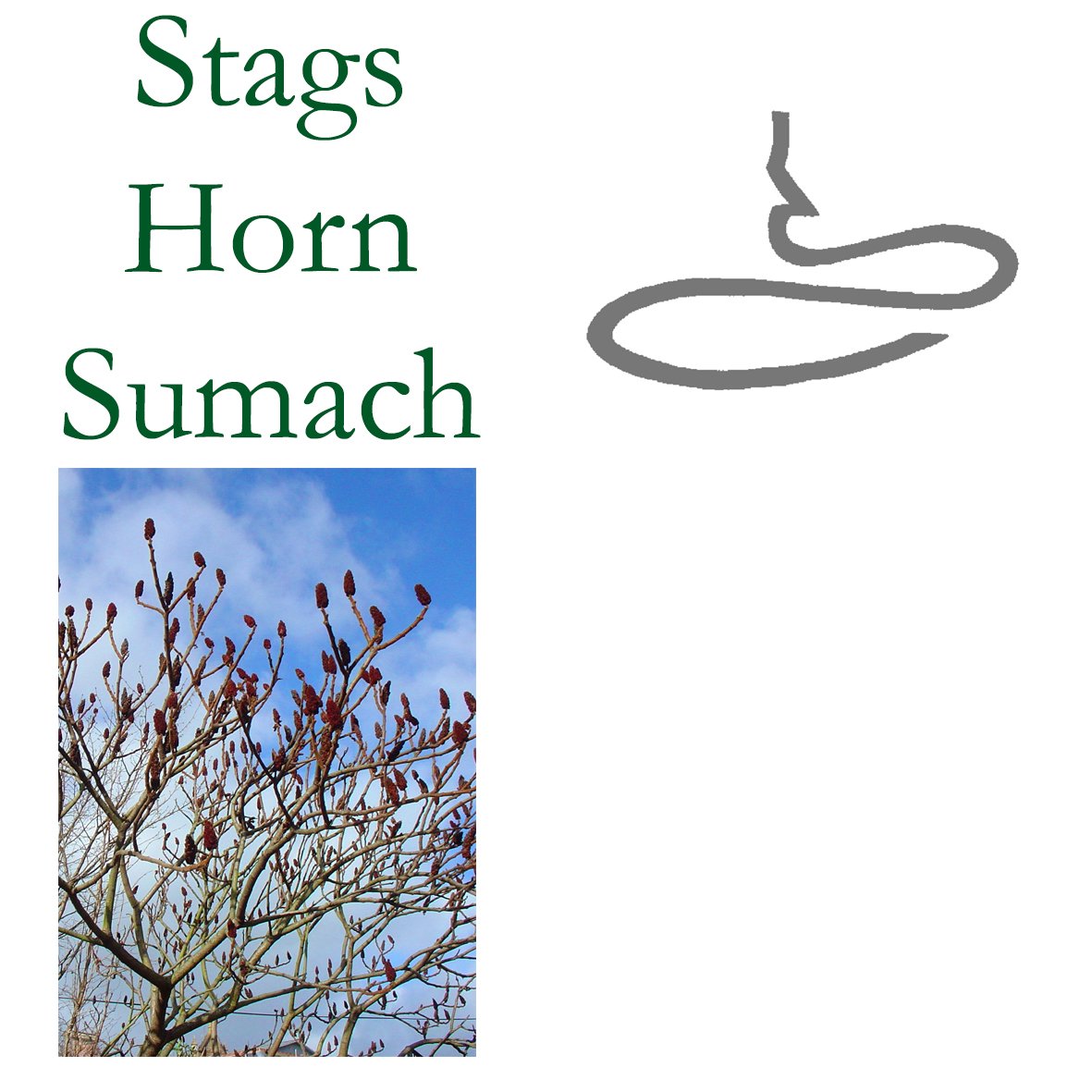STAGS HORN SUMACH (Rhus typhina)
Key: Meditation
Stag’s horn sumach is native to meadows, scrub and woodland margins of eastern North America. It may have got its name from the Sumac Indians who were familiar with the tree and its many properties. The stems were used as tobacco pipes and tubes, the fruits eaten and the bark used as a healing astringent and antiseptic. It was brought to Britain in 1629 by John Parkinson, an apothecary who used a root extract to treat fevers.
It is a small tree growing to 26ft (8m) with an open crown and widely spreading habit. It throws up suckers all around the base though because it can be cut back heavily it is a common garden tree. The leaves are long with many toothed leaflets. Stag’s horn sumach flowers in summer usually with male and female spikes on separate trees, the male a loose cluster of greenish-yellow flowers, the female a tighter spike of rusty red. These ripen into fruit with a sour but edible taste and remain on the furry stems all winter.
The essence of stag’s horn sumach has an effect of releasing tension in the neck and throat areas. At subtle levels too, this tree focuses on the head centres. The brow chakra and related minor chakras are energised, as is the mental body. This has a general positive effect on the functioning of the endocrine system via the controlling pituitary gland.
It enables the flow of intuition and expression of the Higher Will. This is because it activates the mental body where belief systems, reality models and self-images are held. Sumach initiates a calmness and non-attachment on emotional levels that allows more freedom to access valid supportive actions (hence useful for determining “spiritual direction), particularly when in a meditative state.
Stag’s horn sumach is an excellent tree to help balance the energies for meditation. It is cooling, stilling the mental and emotional processes and allowing an easier flow of information and energy together with an increased awareness of underlying reality and the ability to perceive harmonious and unifying characteristics of existence.
Signature: The purple-red branches and flower spikes: the chakras of the head.
Its use as a tube and pipe stem: a conduit for life-energy (smoke/breath) and sweetness (maple syrup was tapped from the trunk via a sumach stem).
Comment: Except poison ivy, all members of the Rhus family have been known for their healing properties for many centuries. They are very high in tannins so are effective astringents useful in cases of diarrhoea, fever, skin complaints, dysentery. The berries are also a coolant and diuretic.

